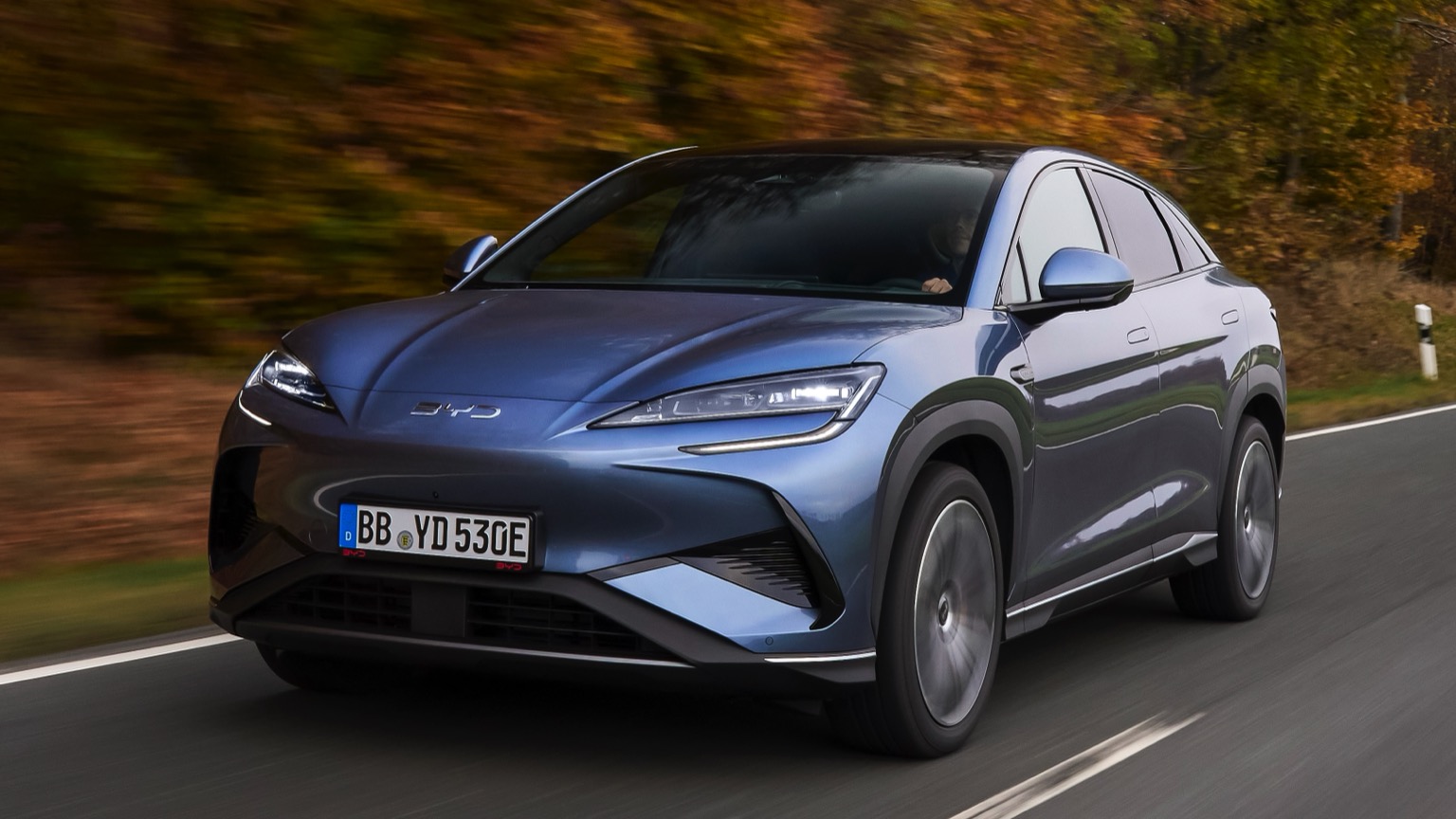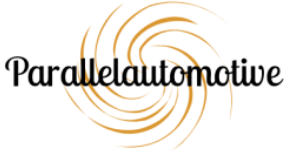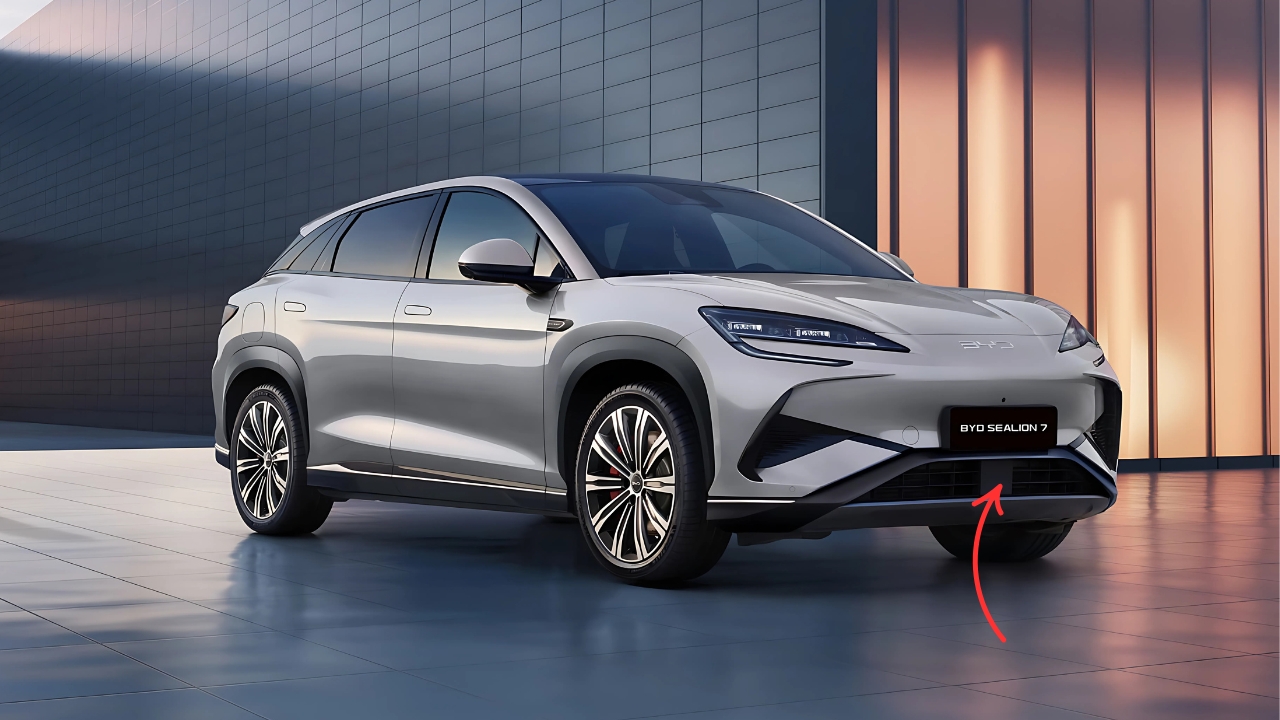BYD Sealion 7 : BYD’s cutting-edge e-Platform 3.0 technology is revolutionizing electric vehicle efficiency, and the Sealion 7 SUV is proof that innovation meets practicality. This comprehensive platform delivers remarkable 10% lower power consumption while maintaining peak performance, making electric driving more accessible than ever before.
The Chinese automotive giant has transformed the EV landscape with intelligent engineering that prioritizes both efficiency and driving excitement. Let’s dive into how this technology is changing the game for electric SUV enthusiasts.
What Makes BYD’s e-Platform 3.0 Revolutionary?
BYD’s e-Platform 3.0 represents a complete rethinking of electric vehicle architecture, designed exclusively for pure electric vehicles. The platform delivers outstanding advantages in intelligence, efficiency, safety and aesthetics, equipped with the world’s first mass-produced 8-in-1 electric powertrain as standard, achieving overall system efficiency of up to 89%.
This isn’t just another incremental upgrade – it’s a comprehensive platform that integrates multiple systems for maximum efficiency. The 8-in-1 electric powertrain combines the motor, motor controller, reducer, onboard charger, DC converter, high-voltage distribution box, vehicle controller, and battery management system into one cohesive unit.
The beauty of this integration lies in its simplicity and effectiveness. By consolidating these components, BYD has eliminated energy losses that typically occur between separate systems, directly contributing to that impressive 10% reduction in power consumption.
Sealion 7: The Perfect Showcase for Advanced Efficiency
The BYD Sealion 7 serves as the flagship demonstration of e-Platform 3.0’s capabilities. The SEALION 7’s electric motor reaches an impressive 23,000 RPM, with the AWD version sprinting from 0-100 km/h in just 4.5 seconds, proving that efficiency doesn’t mean sacrificing performance.
Starting at $54,990 before on-road costs, the Sealion 7 is cheaper than both the outgoing Tesla Model Y and its imminent replacement, making advanced EV technology more accessible to Australian buyers.
Real-world testing has validated BYD’s efficiency claims. During comprehensive testing covering various driving scenarios, the Sealion 7 averaged a respectable 18.3kWh/100km, beating the official figure of 21.9kWh/100km. This demonstrates that the 10% power consumption improvement translates to genuine benefits for daily driving.
Advanced Heat Pump Technology: The Efficiency Game-Changer
One of the most impressive features of e-Platform 3.0 is its advanced heat pump system. The innovative system leverages residual heat from surroundings, the powertrain, passenger compartment and even the batteries, increasing thermal efficiency by up to 20% in winter.
This isn’t your typical automotive heat pump – BYD’s system operates efficiently across extreme temperature ranges. The heat pump system works at temperatures from -30℃ to 60℃, increasing range by up to 20% in winter, addressing one of the biggest concerns EV owners have about cold-weather driving.
The thermal management improvements directly contribute to the overall 10% power consumption reduction. By optimizing how the vehicle manages heat for both battery conditioning and cabin comfort, the Sealion 7 maintains consistent efficiency regardless of weather conditions.
Cell-to-Body Technology: Structural Innovation Meets Efficiency

BYD’s revolutionary Cell-to-Body (CTB) technology integrates the Blade Battery directly into the vehicle’s structure. The cell-to-body technology integrates the battery and the vehicle body floor together, making the battery’s sandwich structure evolve into a sandwich structure for the complete vehicle.
This approach delivers multiple benefits beyond just structural integrity. By making the battery pack a structural component, BYD eliminates redundant materials and weight, contributing to improved efficiency and the 10% lower power consumption figure.
The CTB technology also enables better space utilization. The vehicle features shorter overhangs and a longer wheelbase, significantly expanding passenger space, while a lower body and longer wheelbase decrease the drag coefficient to 0.21Cd. This aerodynamic efficiency directly impacts power consumption, especially at highway speeds.
Blade Battery: Safety Meets Efficiency Excellence
BYD’s Blade Battery technology forms the foundation of the e-Platform 3.0’s efficiency gains. The car gets a Lithium Iron Phosphate (LFP) low-voltage battery instead of a lead acid battery, which BYD claims is up to 6 times lighter than a conventional low-voltage battery with 5 times better self-discharge consumption and a lifespan of 15 years.
The Blade Battery’s unique design philosophy prioritizes both safety and energy density. The battery has successfully cleared nail penetration, temperature, overcharging, and many other tests, while serving as a structural element that enhances the EV’s torsional rigidity.
This battery technology enables impressive charging capabilities that complement the efficiency improvements. With 800V fast charging technology, an electric vehicle can be charged for just 5 minutes to give it a range of 90 miles, while power consumption per 100 kilometers is reduced by 10%.
Real-World Performance: What Drivers Actually Experience
Australian reviewers have been putting the Sealion 7 through its paces, and the results validate BYD’s efficiency claims. The 2025 BYD Sealion 7 delivers a well-rounded driving experience, blending strong performance with comfortable ride quality, though it’s not without its quirks.
The Sealion 7 has yet to be tested by ANCAP or Euro NCAP, but the company backs its vehicles with a six-year, 150,000km vehicle warranty and eight-year, 160,000km battery warranty. This confidence in the technology speaks volumes about BYD’s commitment to long-term efficiency and reliability.
Range figures are competitive within the segment. The single motor Comfort and dual-motor Design AWD use an 82.5kWh battery that provides combined driving ranges of 482 and 456km respectively, demonstrating how the 10% power consumption improvement translates to practical everyday benefits.
e-Platform 3.0 Evo: The Next Level of Efficiency
BYD isn’t resting on its laurels – the company has already introduced e-Platform 3.0 Evo with even greater efficiency improvements. The e-Platform 3.0 Evo features a 12-in-1 electric drive system, improving integration over the 8-in-1 of the e-Platform 3.0, and supports motors that spin up to 23,000 rpm.
The Evo platform uses a 16-in-1 high-efficiency thermal management integrated module leading to a claimed 20% reduction in thermal management power consumption, with battery thermal management claimed to reduce energy consumption by 25%.
These improvements build upon the foundation of the original platform’s 10% power consumption reduction, suggesting that future BYD vehicles will deliver even greater efficiency gains for consumers.
Competitive Advantage in the Australian Market
The Sealion 7’s efficiency improvements position it strongly against established competitors. BYD’s aggressive pricing and strong features give it an edge, particularly with the Premium trim providing great value at $54,990 before on-road costs.
The base model of the Sealion 7 is expected to undercut the Tesla Model Y, which starts at $55,990 before on-road costs, making it an attractive choice for budget-conscious buyers. The 10% power consumption advantage means lower running costs for owners.
Australian road conditions have been specifically considered in the Sealion 7’s development. The local tuning for Australian roads ensures good composure and comfort even on challenging surfaces, maintaining efficiency even in demanding driving conditions.
Future-Proofing Electric Mobility
BYD’s e-Platform 3.0 technology represents more than just current efficiency gains – it’s a foundation for future electric mobility. The platform will allow its EVs to reach 100km/h within 2.9 seconds, provide a range of up to 1000KM, and can be charged up to 150km within 5 minutes using flash charging tech.
The 10% power consumption reduction achieved today sets the stage for even greater improvements as the technology evolves. BYD is the only automaker that makes its own chips, giving them complete control over optimization and efficiency improvements.
This vertical integration approach ensures that efficiency improvements can be rapidly implemented across BYD’s entire electric vehicle lineup, benefiting consumers with consistently improving technology.
Frequently Asked Questions
Q: How does BYD achieve the 10% power consumption reduction?
Through the integrated 8-in-1 electric powertrain system, advanced heat pump technology, and Cell-to-Body battery integration that eliminates energy losses between components.
Q: Is the Sealion 7 available in Australia now?
Yes, the BYD Sealion 7 launched in Australia in 2025 with two variants: Premium ($54,990) and Performance ($63,990) before on-road costs.
Q: What’s the real-world efficiency of the Sealion 7?
Recent testing showed 18.3kWh/100km average consumption, which actually beats the official 21.9kWh/100km figure.
ALSO READ: BMW 3 Series 2010-2012 Faces Australian Recall Over Takata Airbag Flaw

